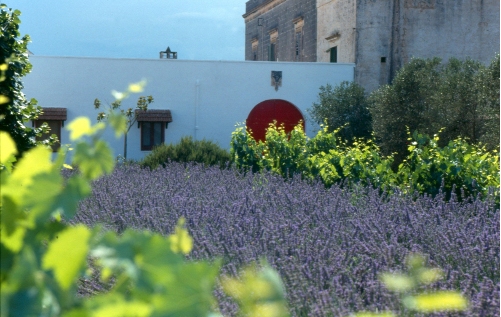





Apulia

|
Apulia is the ‘heel’ of the Italian peninsula, and with the Adriatic sea on one side of the heel and the Ionian Gulf on the other one, the weather is never really cold. Therefore it is possible to grow vegetables all year round; many of them are exported, but many more are used to prepare (the) Apulian gastronomic specialties: the varied vegetable antipasti. They are pushing the Apulian kitchen up among the four best Italian regional cuisines. On the wine front, Apulia is also remarkable, not only because of its large production, but because Apulia has begun a “restructuring” of the wine, which in EU terms, basically means improving the quality. Apulia has already benefited from (an) international interest for a few periods in recent history. In the 1990s it was the Negroamaro-based wines that aroused enthusiasm, and in the following decade it was the Primitivo wines that were popular. This contact with the export market has led to the fact that, in Apulia, a considerable amount of wine is bottled, (considering that Apulia is a southern Italian region) and (everything else) all being equal, one can say that a wine bottled in the production area reaches the consumers with a somewhat greater credibility than a southern Italian wine bottled by an industrial establishment in Northern Italy. Apulia has a large white wine production, focused around the two DOCs of Locorotondo and Martina Franca, but it is the red wines of the region that draw international attention. Roughly speaking, one can say that in Apulia there are three wine areas, each with its predominant grape: The already mentioned Negroamaro has its main area on the western and middle part of the Salento peninsula. There is a wider range of DOCs here with Salice Salentino and Copertino as some of the best known. The traditional tendency of ageing Negroamaro, often blended with Malvasia Nera, in old botti is being replaced by a style that aims to preserve more of the immediate fruitflavour in the wine. Primitivo was also mentioned earlier; this grape, which is genetically identical to California’s Zinfandel, originally comes from Croatia. The city of Manduria is its headquarters, and it is grown in an area south of Taranto, towards the Ionian Gulf. After the immediate success in the 2000s, it became the classic Italian mistake (exploiting a moment of fame to putting a lot of untrustworthy and bad wines on the market) repeated again, but now there is peace around Primitivo. The quality is credible again, and most producers have now learned to find a good balance between its usual high alcohol content and other components of the wine. The third red grape variety, which is still waiting for its commercial breakthrough, is Uva di Troia. It can be found in the northern part of Apulia, with Castel del Monte as the dominant DOC, named after the monumental and impressive castle from 1200 that belonged to Federico II, that can still be visited. The wines of Uva di Troia have a fresher style than the warm-blooded wines from the southern part of Apulia. |
|
||||||||||||||||